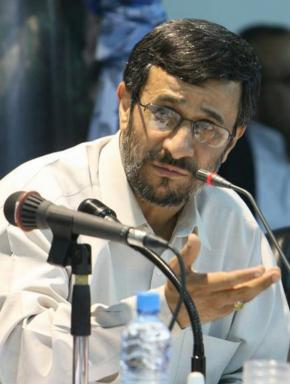ID :
101446
Thu, 01/21/2010 - 02:23
Auther :
Shortlink :
http://m.oananews.org//node/101446
The shortlink copeid
3 zeros to be dropped from Iran’s currency

TEHRAN, Jan. 20 (MNA) -- President Mahmoud Ahmadinejad has announced that three zeros will be dropped from the national currency.
“We want to overhaul the currency and delete the zeros and bring the rial to its true value since the rial does not have value now,” Ahmadinejad told reporters on Wednesday.
The Iranian currency has lost its value in comparison to foreign currencies because Iran has been experiencing double-digit inflation over the past 20 years, partly due to expansionary monetary policies and the efforts to establish a market price economy.
Inflation is expected to rise as Iran plans to free up energy prices in stages starting in the next Iranian calendar year, which begins on March 21.
The Iranian rial, equivalent to 100 dinars, is the official currency of Iran. The dinar has not been used for many years due to its small value.
The current exchange rate is 10,005 rials to one U.S. dollar.
Elsewhere in his remarks, Ahmadinejad asserted that the implementation of the subsidy reform plan will not cause any concerns for the people.
People will receive subsidies in two stages, he said, adding that 70 percent of the people will receive them in the first stage and 30 percent in the next stage.
“We are trying to cover all people, of course. Maybe we cannot do it in one stage, and we may have to do it step by step,” he stated.
The goal of the subsidy reform plan is to bring prices to their true market level within a five-year period. The plan mainly targets energy prices.
“We want to overhaul the currency and delete the zeros and bring the rial to its true value since the rial does not have value now,” Ahmadinejad told reporters on Wednesday.
The Iranian currency has lost its value in comparison to foreign currencies because Iran has been experiencing double-digit inflation over the past 20 years, partly due to expansionary monetary policies and the efforts to establish a market price economy.
Inflation is expected to rise as Iran plans to free up energy prices in stages starting in the next Iranian calendar year, which begins on March 21.
The Iranian rial, equivalent to 100 dinars, is the official currency of Iran. The dinar has not been used for many years due to its small value.
The current exchange rate is 10,005 rials to one U.S. dollar.
Elsewhere in his remarks, Ahmadinejad asserted that the implementation of the subsidy reform plan will not cause any concerns for the people.
People will receive subsidies in two stages, he said, adding that 70 percent of the people will receive them in the first stage and 30 percent in the next stage.
“We are trying to cover all people, of course. Maybe we cannot do it in one stage, and we may have to do it step by step,” he stated.
The goal of the subsidy reform plan is to bring prices to their true market level within a five-year period. The plan mainly targets energy prices.





